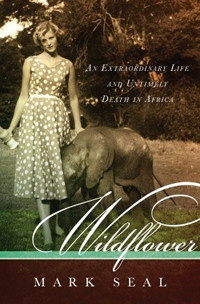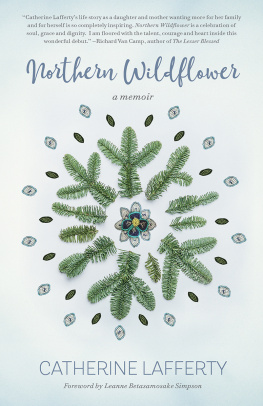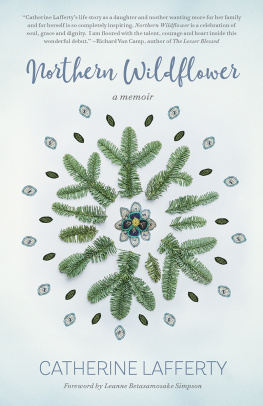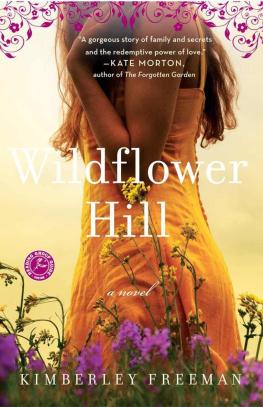I read about the murder of a woman in Kenya from several oceans away. I had never heard her name before. But through the miracle of technology I sent an email to her ex-husband and, within a week, he invited me to attend the womans memorial service and write about her life. I am sure you would get a wealth of material from the great cross section of the Kenyan community that will be there, wrote the womans ex-husband, whose name was Alan Root. Not only did Alan introduce me to the people who could tell me about the woman who diedmy interviews with them provide much of this bookbut he also gave me her letters and diaries, all of which helped me re-create scenes, recall dialogue, and find truth. Of equal importance, Alan opened his heart and told me everything, which was surely difficult, heart-wrenching, and frequently painful for him. For his unsparing openness and unflinching candor, I give Alan Root my profound admiration and endless thanks. This book could not have been written without him.
PREFACE
S he always knew he would come back to her.
He would climb into his helicopter at first light one Nairobi morning and rise above the screaming madhouse of the city, tilting west over East Africas largest slum, and flying out into wonder: out over the Great Rift Valley, the cradle of civilization, a three-thousand-mile-long seam in the earth that stretches from Syria to Mozambique but is at its most glorious here in Kenya. As the floor of the world dropped away, opening into endless sky and a breathtaking vista, he would follow this corridor straight back to her.
There were things she longed to tell him, things only he would understand. Everything shed been too shy and self-effacing to say before would now come pouring out, just as it had in all of the letters she had written him, letters she never sent:
A lifetime has passed since we split, and yet some memories of things we did together seem [as if they happened] only the other day. There is so much I would like to say and share with younow I know I am not inferior to you.
She waited for him in her blue house beside the lake, which looked so perfect and placid from the air. But this was merely another extreme in a country where great beauty coexists with unimaginable brutality, where the border between life and death is the thinnest of lines, where nothing is ever as it seems.
Now in contact with others, I realize how knowledgeable I am about the natural world . People respect me nowadays. But the only love of my life is one of the few people I cannot communicate with, even as a friend.
She could leave all that pain behind as soon as he came back into her life. Flying over the mountains and dormant volcanoes that form a natural amphitheater around the lake, he would hover over the emerald-green water, taking in its wide, verdant, wildlife-infested expanse.
When you flew over and saw the blue house you were probably happy you didnt live here anymore, but I am really such a different person, I hardly know myself. I have written you so many letters in my head but when I try to write I go to pieces.
She imagined him buzzing the house, as playfully as he always had, then touching down on the grass landing strip and stepping out, as if returning from only a brief safari instead of half a lifetime. Then at last she would impress him with her independence and accomplishments and show him the abiding endurance of her love.
Finally, he did come back to her, flying in with the dawn on January 13, 2006. It was not, however, as she had dreamed for so long. He hadnt come to reunite with the woman who had once been his wife, partner, and best friend, the woman hed left to live alone in Africa for sixteen years.
He had come to collect her remains.
INTRODUCTION
T he report was chillingly brief.
Conservationist Killed
Joan Root, 69, animal lover and conservationist who collaborated with her husband, Alan, on wildlife documentaries in the 1970s, was killed on Jan. 13 in Naivasha, Kenya. Root was shot to death by assailants who invaded her farmhouse, the police said. Two men were arrested, officials said. One of the couples films, Mysterious Castles of Clay, narrated by Orson Welles, showed the inner workings of a termite mound. It was nominated for an Oscar in 1978.
As a contributing editor at Vanity Fair magazine, I am always in search of great stories, and this one seemed to have plenty of the right ingredients: conservationist and wildlife filmmaker, nominated for an Oscar for a film narrated by the legendary Orson Welles, murdered for unknown reasons in Africa.
As soon as I began to research her, I quickly realized that Joan Root wasnt just another wildlife filmmaker. She and her husband, Alan Root, were, for a time in the 1970s and 1980s, the worlds greatestwildlife filmmakers, mythical figures to nature lovers of all ages. You didnt watch Joan and Alan merely on television and on flickering classroom screens across Africa and Great Britain, you traveled with them, whether they were sporting with ferocious crocodiles and hippos in exotic lakes, sailing over Mount Kilimanjaro in a hot-air balloon, or being chased, mauled, bitten, gored, and stung by every conceivable creature as they drove, flew, ran, and swam across Africa, determined to capture the continent and its wonders on film before this wild world was lost forever. They were pioneers, filming animal behavior without human interference decades before films such as Winged Migration and March of the Penguins were made. Their movies were often narrated by top movie stars, including David Niven, James Mason, and Ian Holm, and in 1967 one of their films had a royal premiere in London, where the couple was presented to the queen.
They introduced the American zoologist Dian Fossey to the gorillas she would later die trying to save, took Jacqueline Kennedy up in their hot-air balloon, and covered much of Africa in their single-engine Cessna and their amphibious car. Then, for reasons the public never really knew, they suddenly vanished from the screen as mysteriously as some of the endangered species they had documented. They separated and later divorced. Alan, the more outspoken of the couple, went on to become a wildlife-filmmaking icon, winner of awards, tributes, and accolades. The blond, bronzed, beautiful Joan, who was intensely shy and always in the backgroundas both her husbands capable backup and the unheralded producer of their filmsdropped out of filmmaking altogether, retreating to live alone on eighty-eight acres in Naivasha, Kenya, where she devoted herself to saving the ecologically imperiled lake just beyond her home. It was there, in her bedroom at one-thirty A.M . on January 13, 2006, that she was brutally murdered by assailants with an AK-47. Screaming in Swahili that they would fill her with so many holes shed look like a sieve, they pumped bullets through the glass and the bars of her bedroom windows until Joanwho, at sixty-nine, had become one of the most indomitable conservationists in the worldlay dead in a pool of her own blood.










